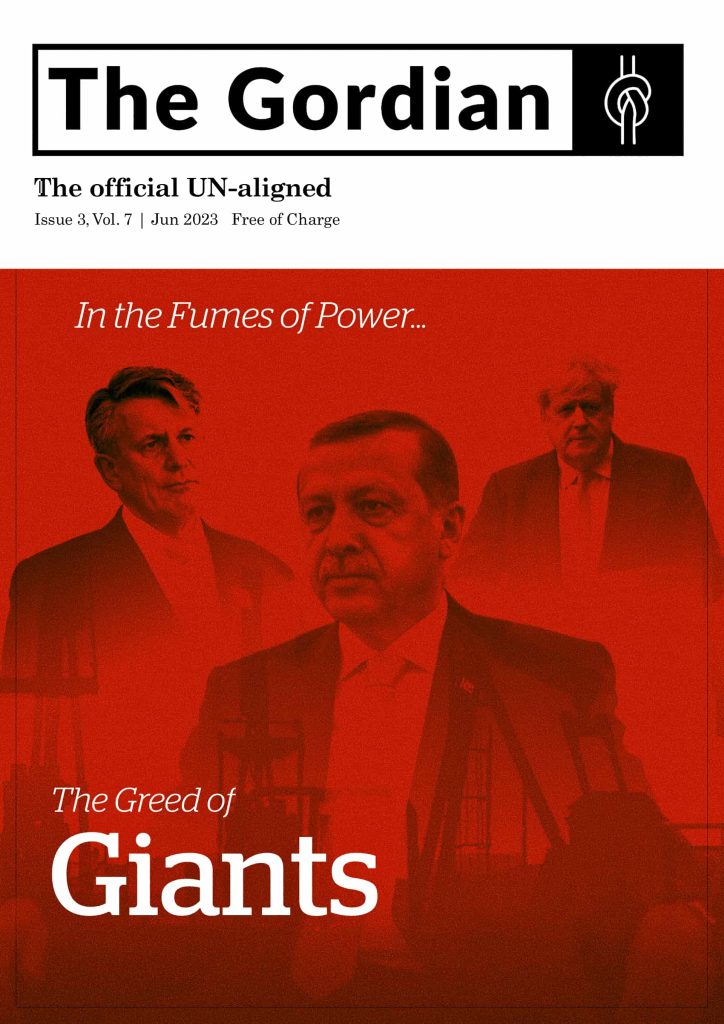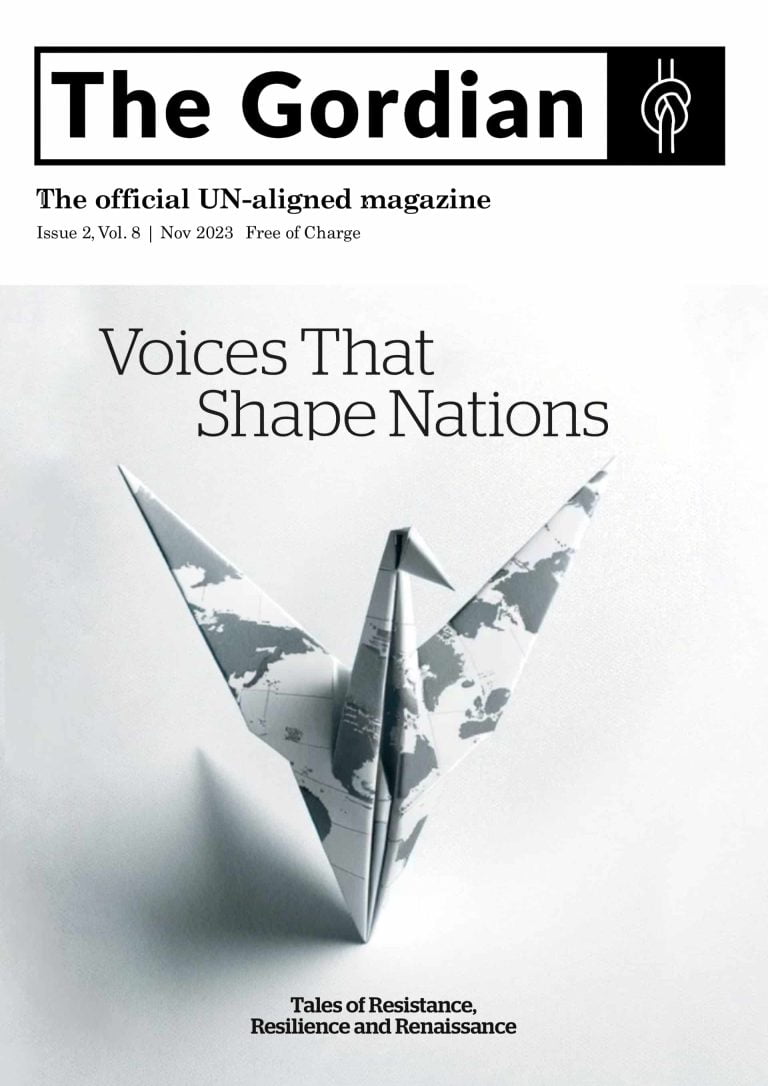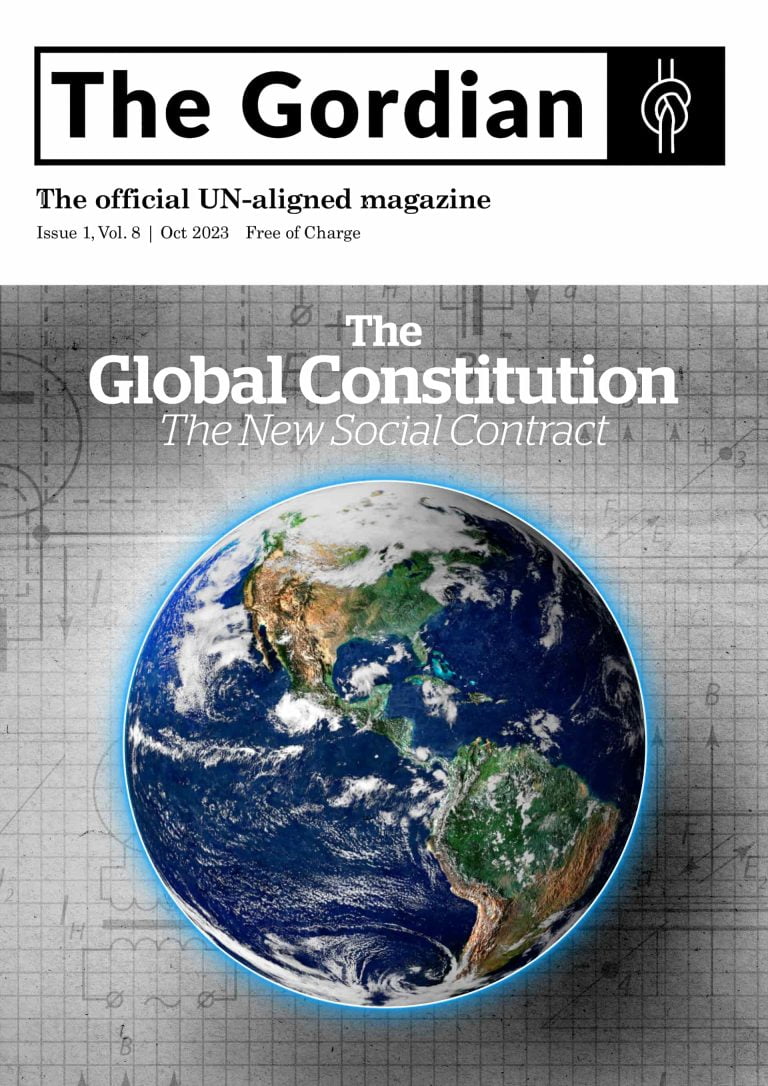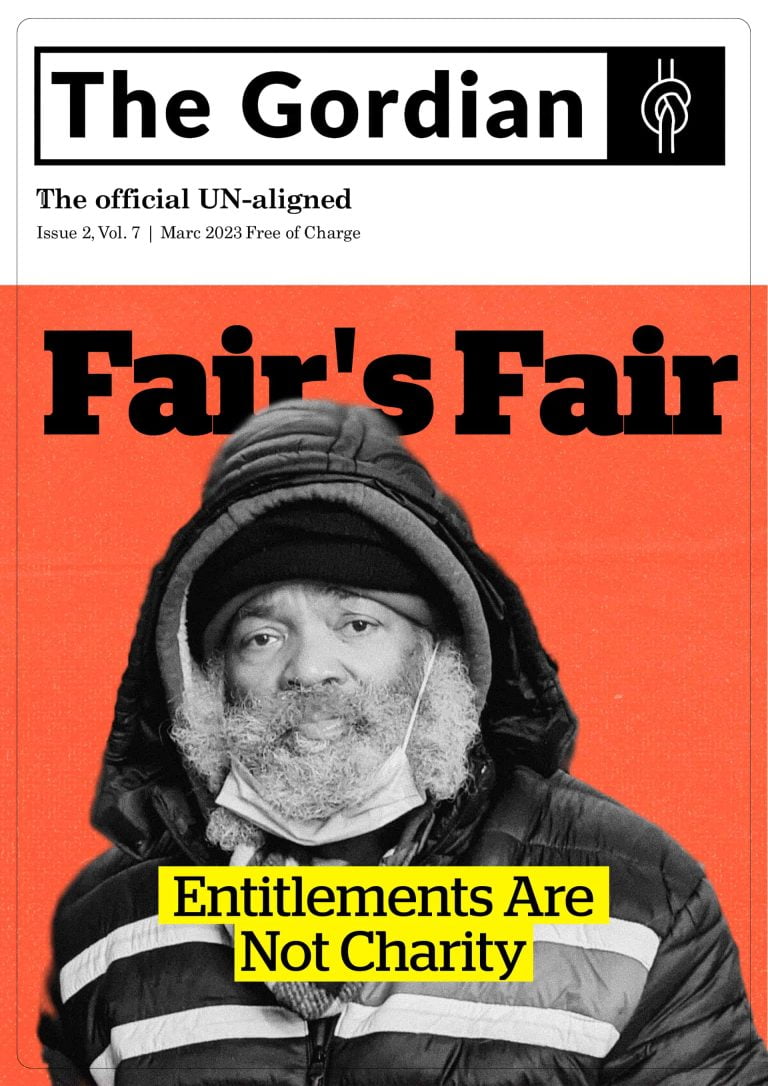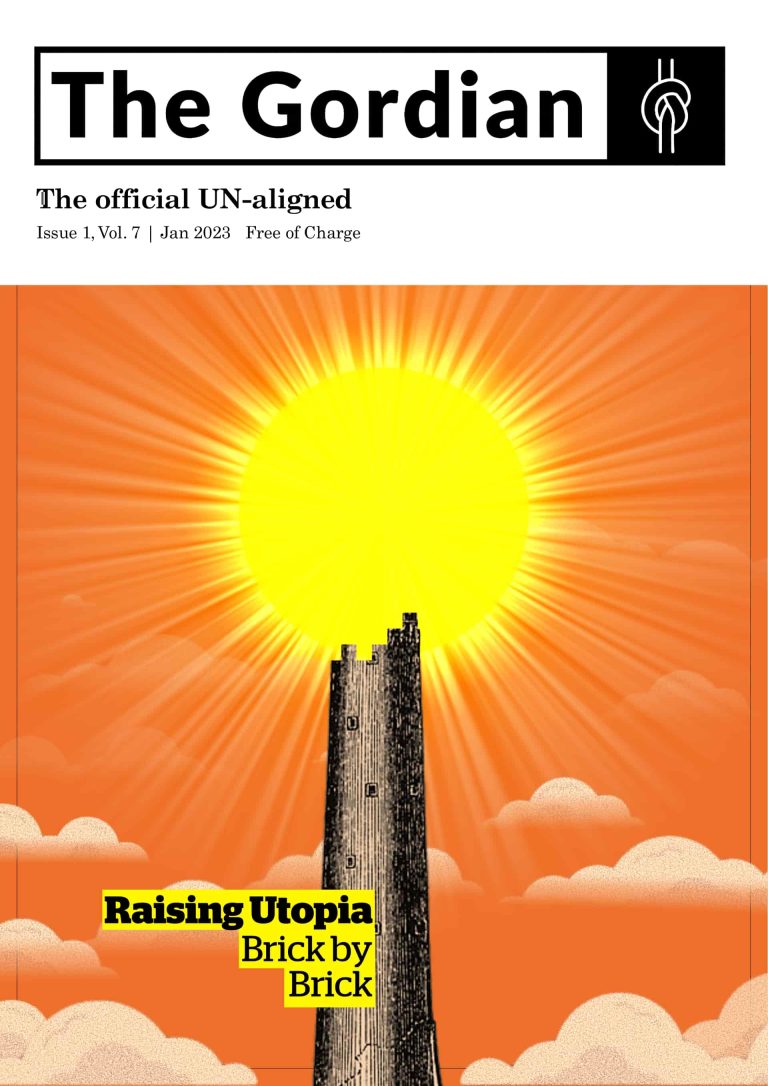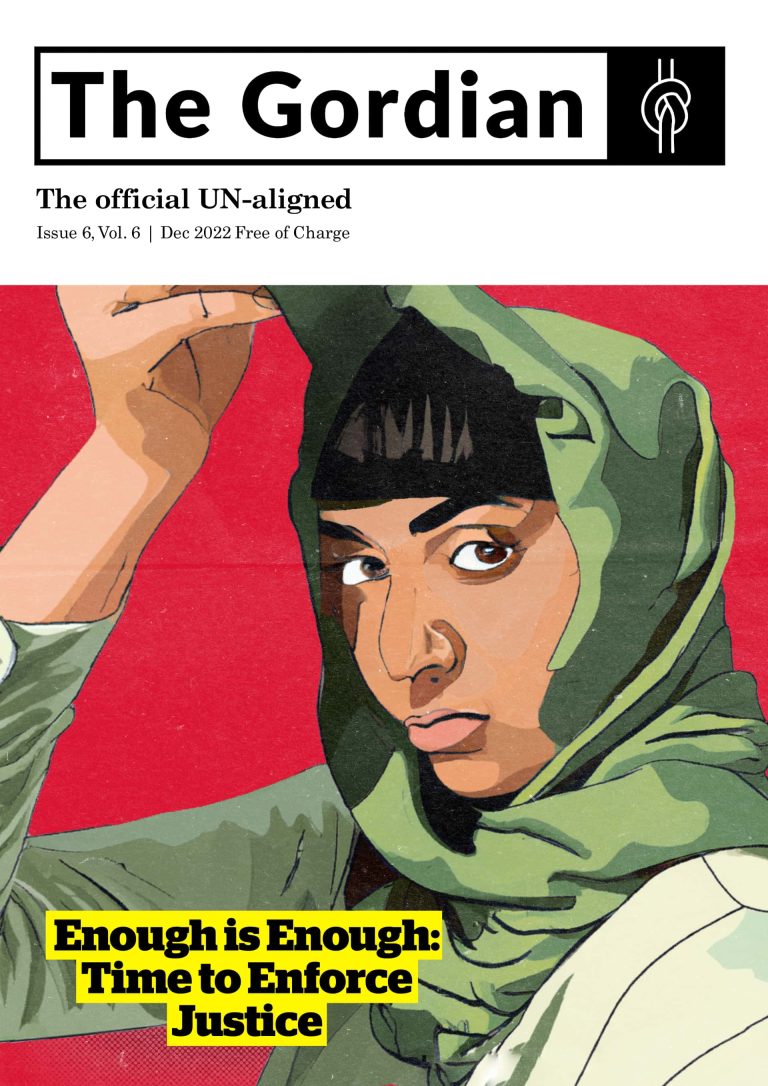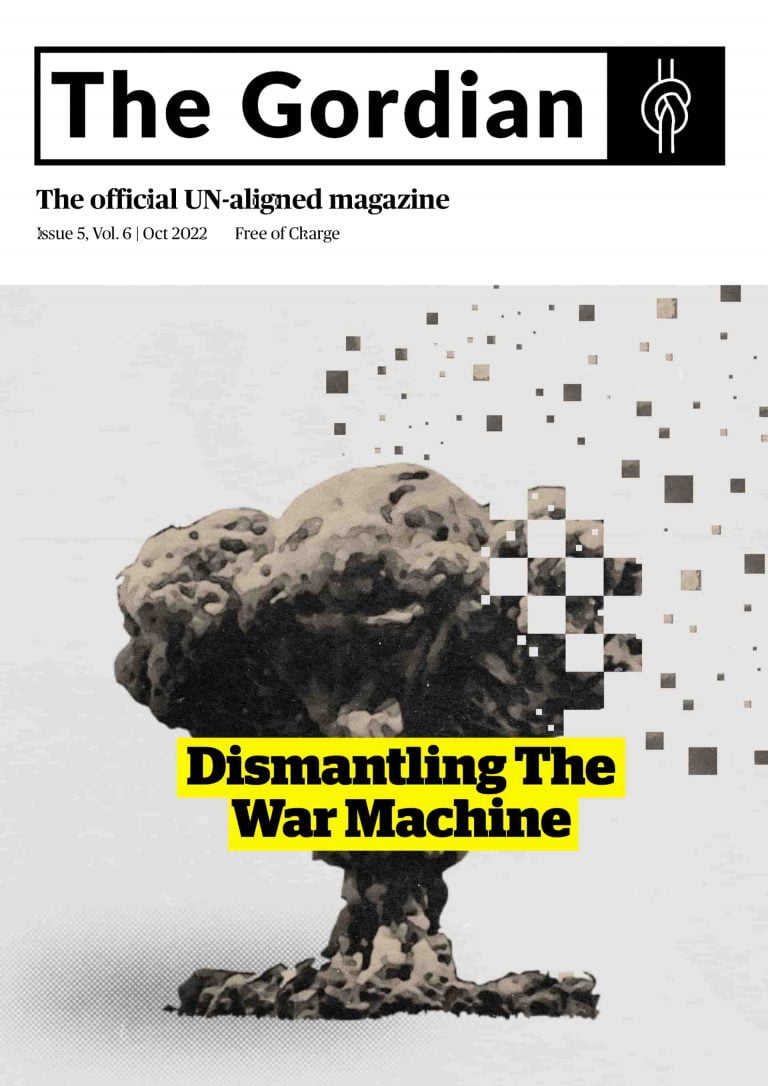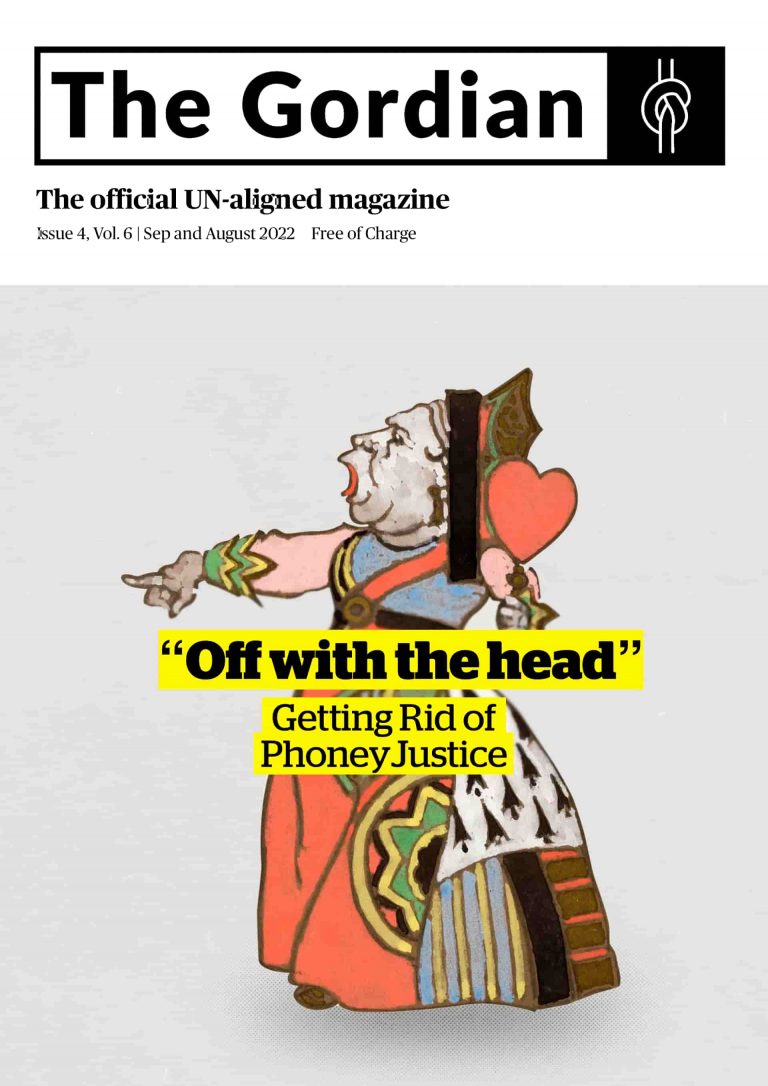Letter From the Editors
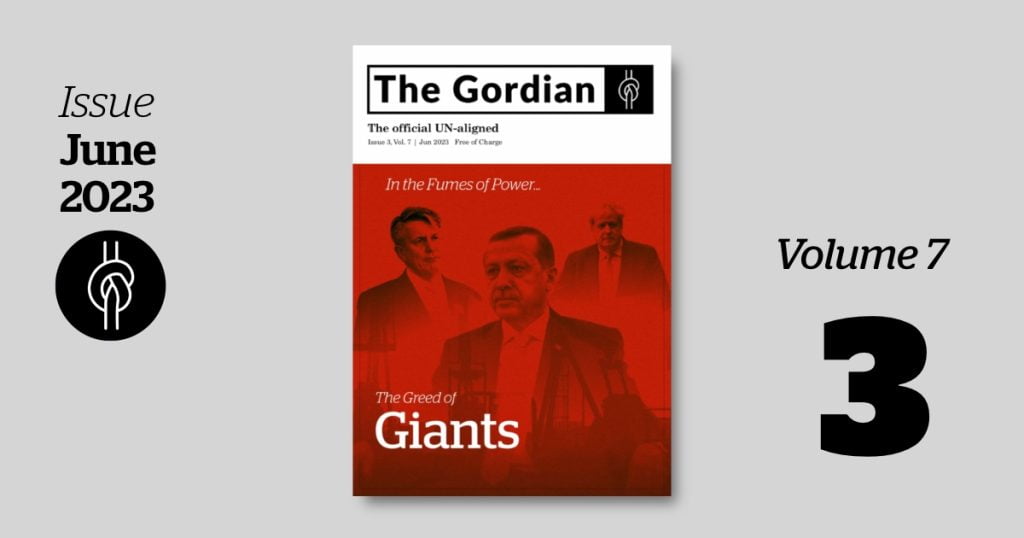
Welcome to the June issue of The Gordian. It’s been some time since we last connected, and we have been eagerly preparing for our return. Our hiatus allowed us to refocus and recentre our commitment to bringing you insightful, provocative, and poignant articles that not only inform, but incite. We hope you’re ready for a feast of thoughtful content, as we are more than thrilled to serve it.
We’re returning with an issue that explores the often smoky and obscured realms of power and the larger-than-life entities who wield it. Titled “In The Fumes of Power: The Greed of Giants”, we dive deep into the troubling implications of unchecked power, the nefarious allure of corruption, and the audacious resilience of those standing against such colossal forces.
Our cover piece, “Unlocking the Infernal Gates: Confronting the Oil Industry’s Greed” by Adrian Liberto, examines the juggernaut that is the oil industry. Adrian confronts its unyielding pursuit of profits, which often comes at the expense of the environment and ethical standards. It’s a compelling piece, raising pertinent questions about our escalator ride towards potential self-destruction.
In “The Love for Turkish Autocracy in the Heart of German Democracy”, Ariana Yekrangi unearths the paradoxical issue of the German-Turkish diaspora’s cultural ties with Erdogan’s autocracy. It’s an exploration of how this paradox may be threatening Turkey’s progress into the modern age.
Dawn Roy’s “‘Corrupt to the Bone’: The Pursuit of Transparency in a Corrupt World” is a sobering analysis of the insidious forms of corruption in global politics, featuring the revelatory index by Transparency International.
Alexander Stoney, in “Sanctuary Cities: Shattering Myths, Protecting Human Rights”, navigates us through the intricate debate on Sanctuary Cities. Are they truly havens for migrants or is there more than meets the eye?
“The Great Pretender: Boris Johnson’s Deceptive Finale to his Controversial Tenure” by Ariana Yekrangi delves into the tumultuous and controversial tenure of the former British Prime Minister, presenting a critical analysis of his impact and legacy.
Partho Pratim Chatterjee introduces us to “4 Ingenious Engineering Solutions to Cool Down Earth”, providing a glimmer of hope amidst the distressing reality of climate change.
In “Bots for a Demining Peace Initiative: The Path Towards a World Free of Landmines”, Omar Alansari-Kreger highlights the promising intersection of peace initiatives and technological innovation.
Jihan Al-Assad’s diary entry, “Life on Repeat: Jihan’s Diary from the Frontlines of a Refugee Camp”, is a poignant window into the harsh realities faced by those in refugee camps, presenting a rare, personal perspective on survival.
Carla Pietrobattista provides a luminous critique of Caravaggio’s 1601 Crucifixion of St. Peter in “Caravaggio’s Crucifixion of St. Peter: The Unseen Heroism”, showcasing the transformative narrative within this iconic Baroque masterpiece.
Our literary journey continues with Alex Liberto’s “English Poetry After WWII: The Rise and Evolution of Post-War Literature in The UK”. This is an intriguing exploration of the cultural landscape post-war and the literary figures that shaped it.
Ariana Yekrangi discusses Michael Torke’s ‘Being’, a captivating insight into the shimmering energy of this music composition.
Lastly, our issue concludes with a fun challenge by Adrian Liberto titled “Unlocking the Vault: A Money-Themed Trivia Challenge”. This quiz is designed to test your financial knowledge in a unique, enjoyable way.
Each article in this issue has been carefully crafted to provide a comprehensive, thought-provoking, and engaging perspective on the pressing issues of our time. As always, we hope to enlighten, inspire, and provoke thoughtful discourse among our readers.
Thank you for continuing this journey with us. Happy reading!
The Defining Stories of May 2023
By Adrian Liberto and Ariana Yekrangi
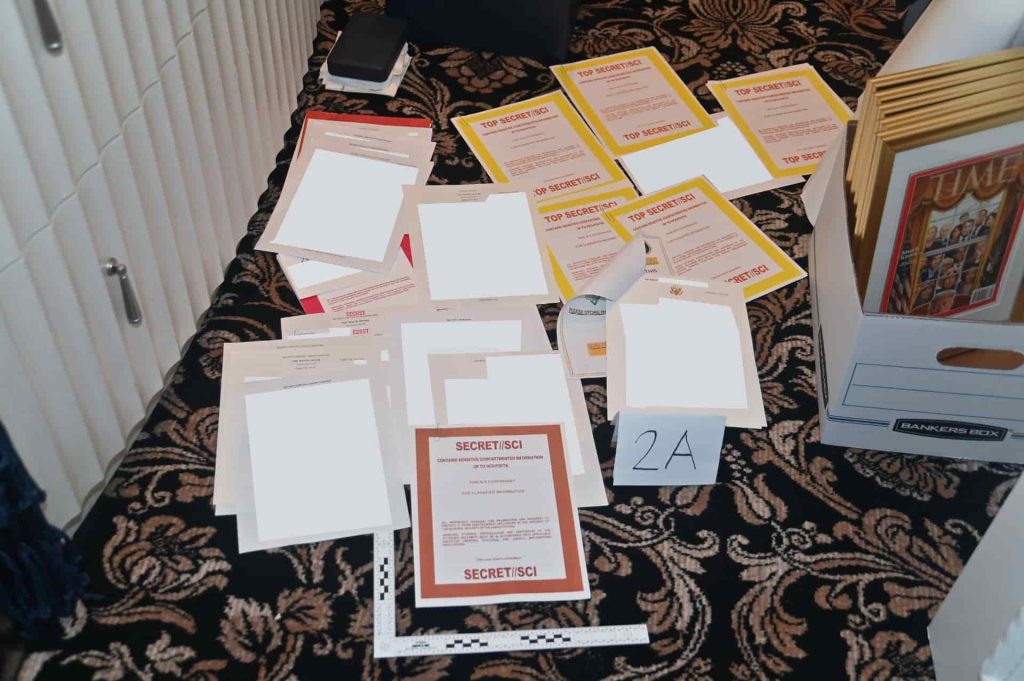
Unlocking the Infernal Gates: Confronting the Oil Industry’s Greed
By Adrian Liberto
The oil industry’s unyielding pursuit of profits at the expense of the environment and ethical standards poses a significant threat to the future of humanity. Are we on the escalator heading towards self-destruction?

The Love for Erdoğan’s Autocracy in the Heart of German Democracy
By Ariana Yekrangi
Cultural ties fuel German-Turkish diaspora’s support for Erdogan’s autocracy, a paradox threatening to stall Turkey’s progress in the 21st century.
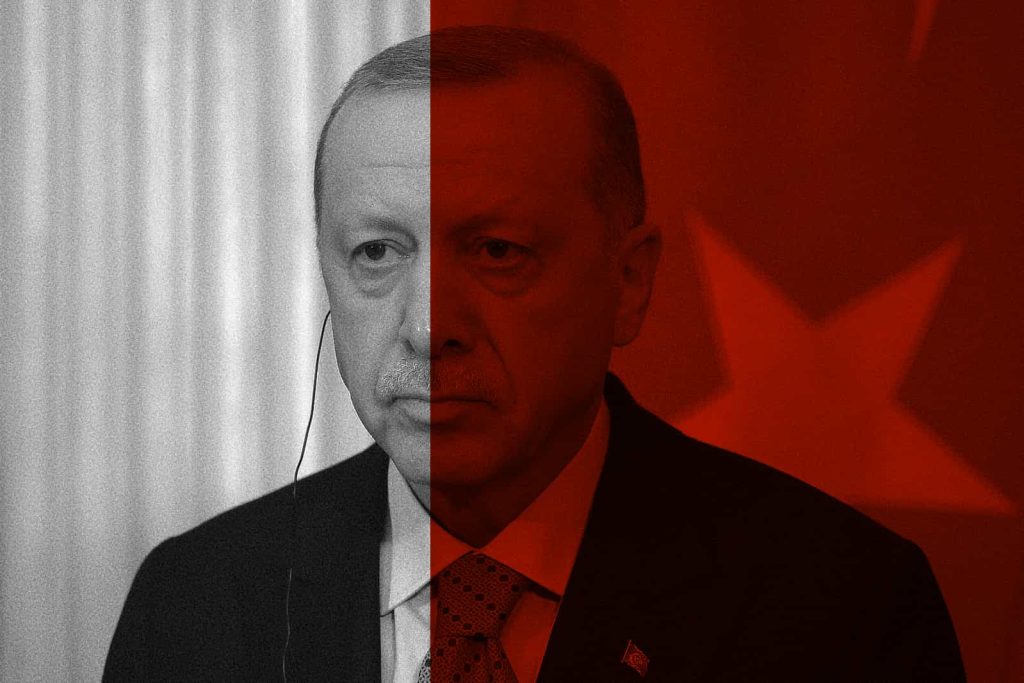
‘Corrupt to the Bone’: The Pursuit of Transparency in a Corrupt World
By Dawn Roy
Transparency International’s index reveals 124 nations stagnant in the fight against corruption. What forms does corruption take in politics, and what can be done to confront it?/
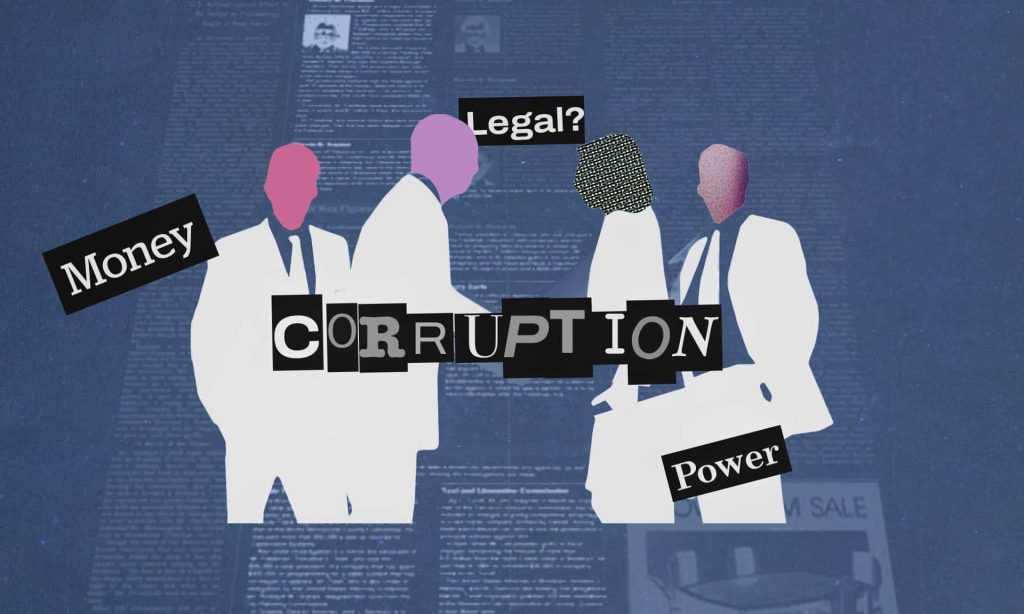
Sanctuary Cities: Shattering Myths, Protecting Human Rights
By Alexander Stoney
Salvation of subterfuge? Since 1979, Sanctuary Cities have become the hot political potato — are they migrant safe havens or is there a hidden truth?
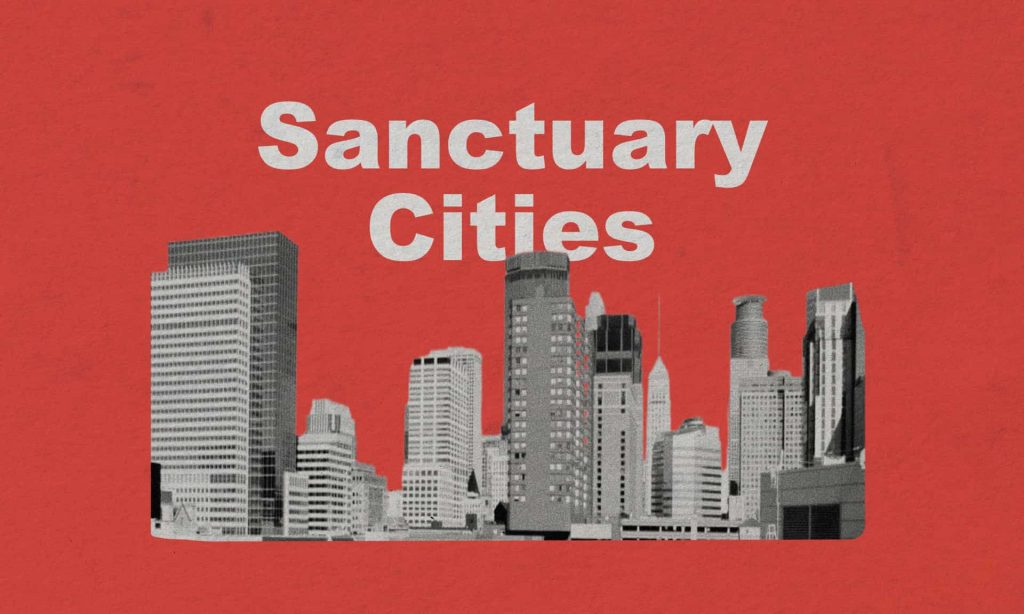
Have you ever received a parking ticket? Most are undoubtedly familiar with this feeling of intense frustration at the sight of a small fine tucked at the base of their windshield.
However, what if a minor parking ticket posed the threat of a much larger consequence? What if it meant your children would be taken out of school? What if it meant you and your family could be deported? This is the reality for thousands of illegal immigrant families living in North America.
If you are a student of Urban Geography or Public Policy, you are undoubtedly familiar with the term ‘sanctuary city’. The concept, first coined in the 1980s, is now a common feature of often heated political debate about immigration and refugee policies, particularly in North America.
Misconceptions about sanctuary cities
Preconceived notions of sanctuary cities typically vary depending on political alignment. On the right, sanctuary cities are painted as anarchical urban centres where laws are defiantly flouted; on the left, they are more likely to be seen as safe havens for marginalised and vulnerable minorities.
In truth, neither of these descriptions is fully accurate. In the midst of such controversy, it is important to be clear about what a sanctuary city is and what it actually does.
What are sanctuary cities?
The term ‘sanctuary city’ refers to a municipal jurisdiction that limits its cooperation with federal immigration enforcement against illegal immigrants.
Sanctuary cities designate themselves as such in order to provide access to municipal services to people who are non-status “undocumented” migrants, who might otherwise avoid any interaction for fear of detection and deportation under federal immigration laws.
In sanctuary cities in Canada and the US, municipal programs and services are delivered in such a way as to create a safe environment for non-status migrants.
Why are sanctuary cities important for non-status migrants?
Non-status migrants are a particularly vulnerable population and often live fearing detection and deportation at every step of their daily lives. Their precarious status regularly causes families to avoid interactions that could potentially expose their undocumented status.
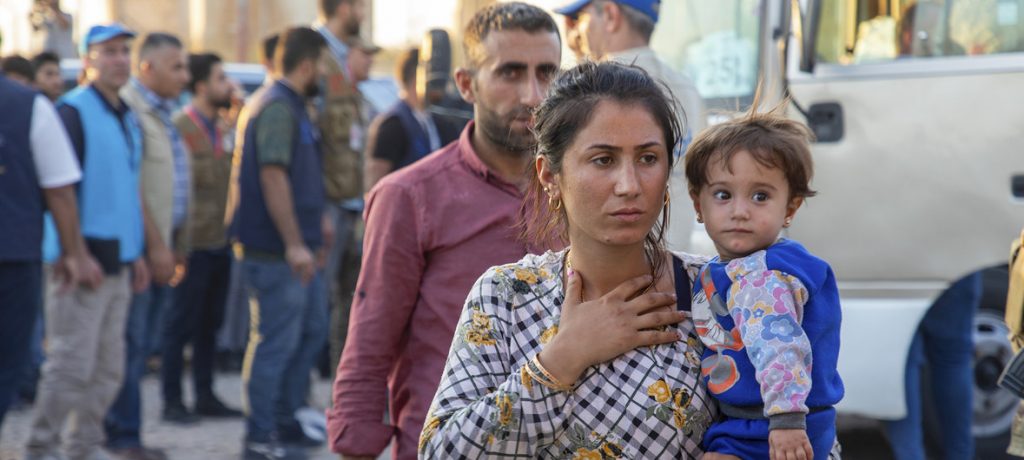
This consequently leads to families losing police protection and services, healthcare facilities, public health programs, social services, public facilities and schooling, with wide implications for themselves and their children, and for the wider society in the city.
Something as simple as a speeding ticket or a school breakfast program can cause immense stress. Sanctuary cities effectively remove themselves from the enforcement of immigration laws by drawing a hard line between federal (and state/provincial) law enforcement and the delivery of municipal services.
What is the difference between sanctuary cities and non-sanctuary cities?
In non-sanctuary cities in Canada and the USA, when municipal officials or police become aware of the identity of non-status migrants, they may be compelled by federal immigration law to report this to federal authorities, who may detain and deport the migrants.
In a sanctuary city, policies usually direct police and other city officials to not inquire about immigration status, not deny any services based on immigration status, and not share personal or identifying information with federal authorities unless expressly required to under the law.
But why would a city become a sanctuary city?
These examples explain the process but do not answer the question of why a city may choose to designate itself as a sanctuary city. Is it a question of compassion and mercy? What is in it for the city? Are there penalties for ignoring federal law?
The answers are complex. The concept of the sanctuary city has both symbolic and practical meanings. In human rights terms, sanctuary cities are an expression of values of openness to diversity and equality, fair treatment of all residents and equal opportunity and access to services.
As a political statement, the concept of the sanctuary city has been particularly contentious in the US during the Trump administration, when tough immigration policy became a defining feature of the federal government.
Chief among the examples was the use of Title 42 along the Arizona-USA border. The Trump administration used this code to deport immigrants who crossed the border illegally, effectively denying the right of asylum seekers to a hearing or due process. Thus, sanctuary cities became a powerful countervailing political statement.
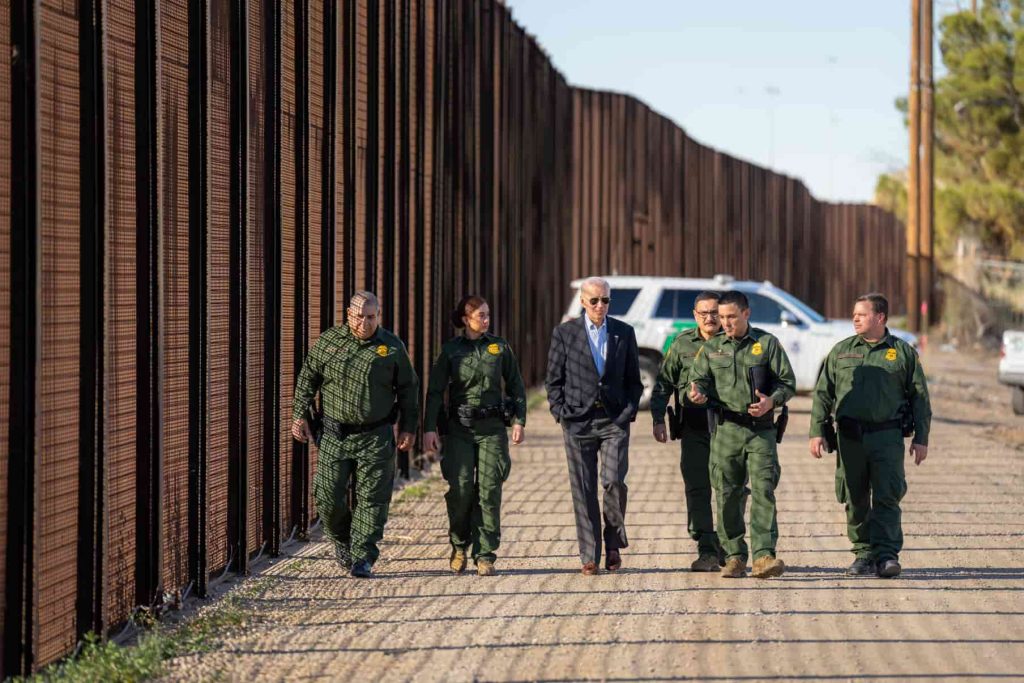
Sanctuary cities as a practical policy
As a practical policy, cities, particularly large ones with multicultural and multiethnic populations, see the quality of life of the city as a whole as a function of the well-being of all communities within its boundaries. If non-status migrants are effectively denied basic services, the city as a whole suffers.
The problems of crime, low educational attainment, limited healthcare, and social isolation create an environment of profound inequity and social instability.
For municipal governments, the designation of a sanctuary city sends a signal to all residents that they are safe when accessing municipal services. This reduces the invisibility of a population and allows for better policy outcomes across the urban space.
Do sanctuary cities actually work?
A good question to ask is, do sanctuary cities actually work? Research comparing social measures in sanctuary cities and non-sanctuary cities is inconclusive.
While one 2015 study in the US highlighted that sanctuary cities experienced 15% less crime than non-sanctuary cities, other studies are less conclusive.
However, the issue at the core of the debate around sanctuary cities is clear: should cities be forced to support federal immigration law enforcement even at the cost of their own local social and economic well-being?
Are there any consequences for becoming a sanctuary city?
The decision to become a sanctuary city is not an easy one. There may be consequences for ignoring federal immigration laws in the delivery of local services.

In Canada, the Canada Border Services Agency enforces immigration laws throughout the country, including in sanctuary cities. However, Canadian sanctuary cities offer the explicit commitment to not inquire about or reference immigration status when delivering municipal services.
Immigrant advocacy groups argue that this is not enough, with police services in particular effectively denied to marginalized and often racialized populations.
In the US, the sanctuary city has taken on a more politically and legally defiant tone. In 2017, President Donald Trump signed an executive order that allowed both federal and state governments to withhold funding from sanctuary cities. This underlined the financial stakes of this political show-down.
The current status of sanctuary cities
In 2021, there were only three official sanctuary cities in Canada: Toronto, Hamilton and London. Many other cities have debated the idea and others, including Edmonton and Vancouver, have adopted the less contentious hybrid “access without fear” designation.
In the US, according to the Center for Immigration Studies, more than 150 counties and cities have some ‘sanctuary’ measures in place.
While the concept of a sanctuary city will continue to be hotly debated in municipal politics, its precise meaning and powers remain murky and controversial. However, as cities become ever-more global and multicultural, ensuring protection for citizens is as important as ever.
The Great Pretender: Boris Johnson’s Deceptive Finale to his Controversial Tenure
By Ariana Yekrangi
Boris Johnson’s controversial tenure concludes with an evasive exit, leaving behind a legacy ripe for reform and questions about the ethics of leadership.
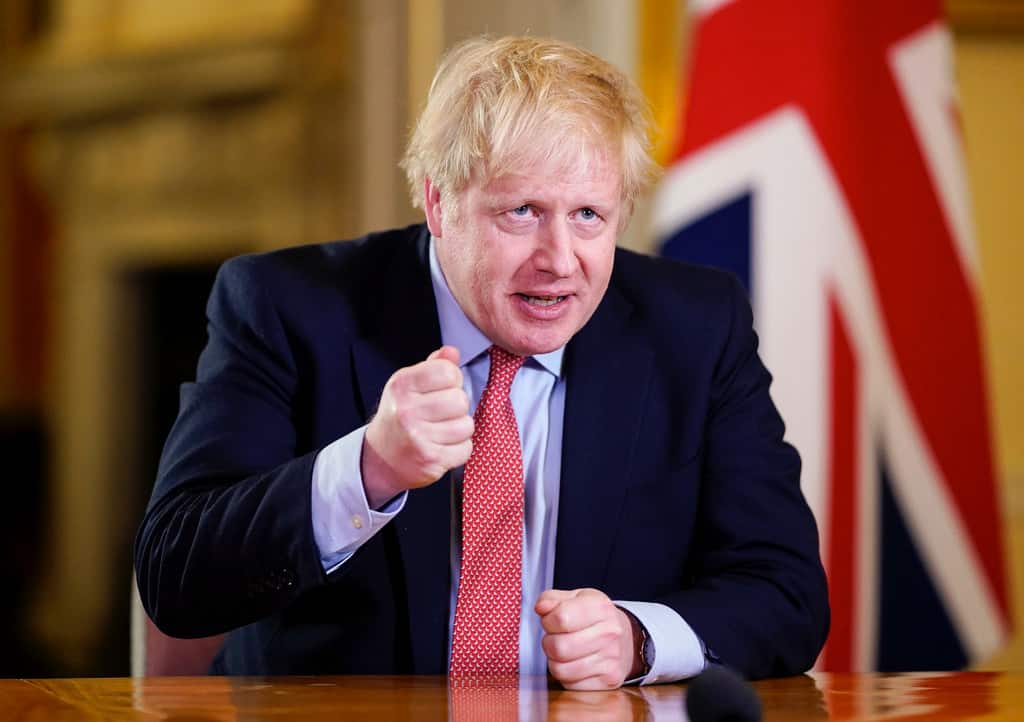
Behold the curious tale of Boris Johnson, a leader whose exit from the political limelight has been less of a dignified adieu and more of a truculent retreat. Clad in the armour of self-pity, Johnson seems to have recast himself as a tragic hero, wronged by an ‘ungrateful nation’. However, as the curtains close, the audience sees through the artifice, observing a man who, in the throes of responsibility, chose subterfuge over substance.
Evasiveness in Leadership
Indeed, Johnson’s saga brims with the essence of escapism, a story not of dragons slain, but of difficult truths avoided. One could argue that Johnson’s time as Prime Minister bore the mark of chronic evasiveness, whether it was the blithe handling of his own COVID-19 regulations, his doublespeak over Brexit, or his contentious prorogation of Parliament.
It would seem Johnson took a page, not from Churchill – the man he often positions himself as heir to – but from across the Atlantic, echoing the grand illusions of Donald Trump. His hasty departure from the Commons reeks of pre-emptive evasion, an attempt to dodge the gallows of a seemingly inevitable defeat. It stands in stark contrast to Churchill’s resignation post the Dardanelles debacle during WWI, where, confronted with a failed military operation, he chose accountability over evasion. Indeed, opting to step down from his lofty cabinet position, Churchill had elected to serve on the front lines, sharing in the war’s hardship rather than shrinking responsibility.
And so, we find at the heart of Johnson’s leadership a maddening penchant for evading accountability. His selective amnesia in facing the Commons and his disdain for the committee investigating his behaviour – all echoing the Owen Paterson scandal – paint a vivid image of a man so entangled in his web of falsehoods, that cries of “witch-hunt” and “kangaroo court” seem less like genuine feelings of injustice and more like the manifestations of a guilty conscience.
The trajectory of Johnson’s political odyssey is a remarkable anomaly in British history. It is a tale that unfurls from the zenith of a sweeping electoral victory in December 2019, to the nadir of a Prime Minister stained by the dishonour of a criminal conviction while still in office – a shocking first for the country.
Johnson’s Parting Gift
His decision to step down as an MP signals his declining cachet among his erstwhile Conservative comrades. This retreat comes across as a desperate manoeuvre to evade the mantle of a sullied legacy. His hasty departure does nothing to bolster the integrity of politics, rather, his parting honours list feels like a disdainful farewell, rewarding those who stood by his side and facilitated his dubious exploits.
Yet, amidst the wreckage, there flickers a beacon of hope. Johnson’s resignation may finally clip the wings of his destructive influence on British politics. Despite his waning influence, his spectre still haunts the scene, poised to disrupt agendas and foster a political atmosphere steeped in deceit. This is a man who, when confronted with his blatant disregard for truth and justice, opted for flight over facing the ruins of his self-created disaster.
A clarion call for reform reverberates through the halls of power. The methodology of assessing whether a minister has been duplicitous in parliament warrants an overhaul, as does the role and efficiency of the Privileges Committee. Further, the tradition of the honours list demands rigorous scrutiny. This may well be the legacy that Johnson leaves behind – a catalyst for long-overdue reform.
Johnson’s dénouement in the grand theatre of politics plays out like a questionable reshaping of traditional honours into mere tokens of favour. Figures like Priti Patel and Jacob Rees-Mogg find themselves showered with rewards, while their contributions to public service are mired in controversy.
The honours list, coupled with his fiery parting monologue, incites probing questions: were these honourees serving the public good or merely facilitating Johnson’s vaulting ambitions? A retrospective glance at his tenure suggests a disquieting chasm between these two goals.
Johnson’s legacy is enshrined in an honours list as crude as it is disheartening; an epitaph that is unequivocally Johnson-esque. The tradition of outgoing Prime Ministers gifting loyal acolytes with life tenures in the House of Lords rings hollow, particularly in an era when leaders are routinely unseated by voters or their party comrades. The system pleads for reform, and one can only hope Johnson’s departure could be the spark to ignite this.
The Aftermath
Whispers of a potential resurrection persist, likely stoked by the embers of his colossal ego. Yet, Johnson stands as a fallen titan, the embers of public support dwindling to ashes, a master of deception whose self-implosion stands as an indictment of his absence of moral courage and accountability.
Despite his contentious departure, his idiosyncratic rhetorical flair continues to command significant sums from corporations, crypto aficionados, and financial institutions. This suggests that a profitable circuit of speaking engagements could be on the horizon. Another possible avenue for Johnson might be resuming his career as a columnist. His tenure as a weekly columnist during David Cameron’s leadership proved instrumental in bolstering his image as a compelling alternative, conveniently avoiding the messy intricacies of governance or parliamentary representation. Now, he’s likely to be sought after by right-leaning newspapers that have been his long-term supporters. By wielding the power of his pen, he could continue to challenge his adversaries like Rishi Sunak, all the while garnering press allies and maintaining his relevance amongst his supporters, the insane.
Engineering Solutions to Combat Climate Change: 4 Groundbreaking Approaches
By Partho Pratim Chatterjee
As the effects of climate change continue to worsen, learn about four groundbreaking engineering solutions that are providing hope for a more sustainable future.

Bots for a Demining Peace Initiative: The Path Towards a World Free of Landmines
By Omar Alansari-Kreger
Could the development of robots capable of demining, ensure that peace is within reach for regions recovering from or living through conflict?
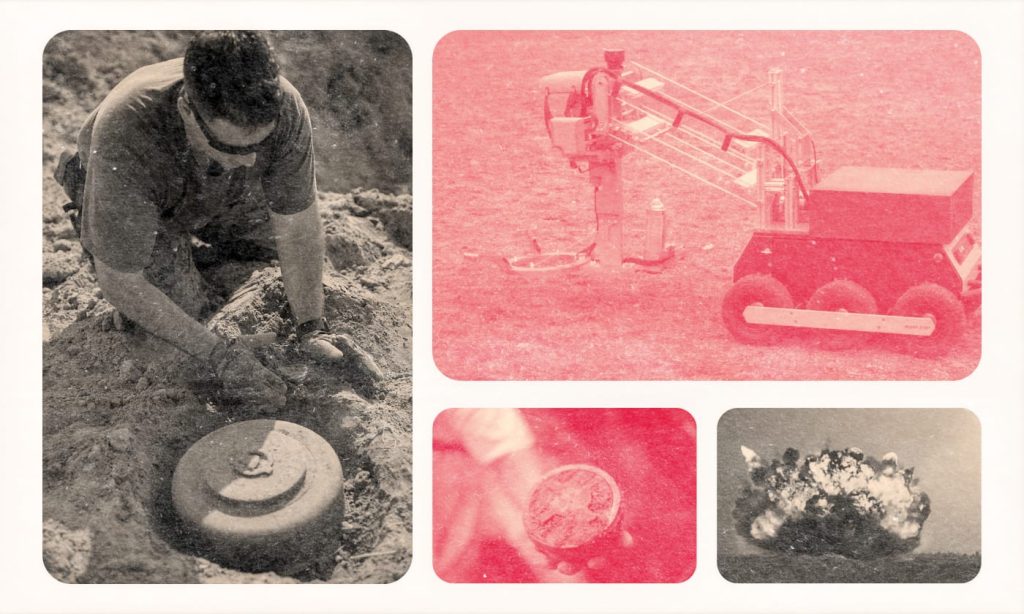
One of the greatest escapes for children growing up against the backdrop of war and famine is in their creative imaginations. The power of pretend is brilliantly articulated by children in games where they explore and adventure in the unforgiving rubble and debris of their war-torn communities.
Imagine, a child wanders to the outskirts of town kicking stone pebbles in between barbed wiring, intermittingly dispersed in a seemingly unsuspecting demarcation area alluding to some kind of Neverland.
The child struggles to read and does not understand the faded warning signs informing of the nearby minefield. Eventually, the child steps on an anti-personnel mine and loses their life.
It may take days, weeks and possibly months to recover pieces of the child’s body assuming their remains are found and recovered by international peacekeepers, provided they have not already been demobilised.
The devastation of landmines
This is descriptive of a world where, according to the International Committee of the Red Cross, 10 million landmines currently remain spread across 64 nations.
The Red Cross also estimates that since the end of the Cold War, 25 million additional landmines are laid each year, killing 1,000-2,000 people each month; the majority of whom are civilians, with many children deaths.
In Yemen alone, the United Nations reported that as of 2022, war casualties impacting civilian populations increased by 75% due to landmine exposure, with anti-personnel mines identified as posing the greatest risk when compared to anti tank variants.
To paraphrase the idealistic bravado of Jack Valentine from the 2005 film Lord of War: “the real weapons of mass destruction are small arms, not nuclear weapons sitting safely in silos protected as national state secrets.”
Why has the usage of landmines not been banned?
Why have landmines not made INTERPOL’s “international weapons ban?” It must be realised that accelerants for mine laying typically materialise in proxy wars, armed border skirmishes and military occupations.
Considering the great potential for civilian blowback, why have the Geneva Conventions in conjunction with the United Nations failed to ban landmines as conventional weapons?
Established in 1997, the United Nations Mine Action Service (UNMAS) is the only supranational organisation to date committed to mitigating, managing and eliminating the global threat of landmines.
Per UNMAS official reportage, the estimated annual budget of the organisation is $63.5 million, with the majority of its funding derived from the United Nations General Assembly, the United Nations Voluntary Trust Fund for Assistance in Mine Action and philanthropies, in addition to private individuals.
Can landmines be removed?
The United Nations Office for the Coordination of Humanitarian Affairs reported that 164,000 anti-personnel mines were cleared globally as of 2020. It costs anywhere from $3-30 to lay a landmine, but $300-$1,000 to remove them.
The total cost of removing all anti tank and anti-personnel mines globally is estimated at $50-100 billion. It would take 1,100 years to achieve a world free of landmines with UNMAS as the supranational spearhead.
What we need to consider regarding landmine regulation
It therefore becomes evident that the numbers are not on the side of international minesweeping operations. It is for that reason that a seemingly hopeless situation begs Silicon Valley innovation.
It is all too obvious that solutions cannot be identified without first raising a series of propositional questions:
- Can national governments be bothered to commit their militaries to demining operations for world peace using the supranational peacekeeping machinery of the United Nations?
- What long-term collaborative partnerships can be formed with artificial intelligence and robotics dedicated to demining operations?
- How can advocacy organisations join forces with think tanks and tech innovators to develop and perfect automated demining technologies using advanced artificial intelligence interactively?
Can peace be achieved when landmines are still active?
The international community has developed unmanned aerial vehicles capable of destroying entire villages remotely from thousands of miles away, often on opposite sides of the world.
Why have they failed to apply a similar conceptual approach to demining operations in the interest of securing an attainable world peace?
Nations plagued with landmines are not at peace. While it is possible to clear landmines, the work is dangerous and painstakingly long.
Additionally, as long as preventable landmine casualties are accepted as routine facts of life in failed state realities, peace will forever remain illusory allowing state kleptocracies to thrive at the expense of their own people.
What is bots for demining peace initiative?
It is for this reason that a “Bots for Demining Peace Initiative” is required to introduce a unique trimetric between demining operations, demining advocacy and advanced AI automation to pursue a world free of landmines.
This initiative would allow remote controlled or semi autonomous machines to effectively and efficiently remove active landmines.
This initiative would drastically expedite the process of demining and represents a bright future for restoring peace to regions and countries devastated by landmines.
Most importantly, the machines would not only save the lives of many deminers but would protect the imaginative child walking through their war-torn neighbourhood.
Life on Repeat: Jihan’s Diary from the Frontlines of a Refugee Camp”
By Jihan Al-Assad
Jihan, a UN-aligned intern, pens a raw diary from a refugee camp, recounting the harsh realities of daily life, personal loss, and the struggle to access healthcare due to financial hardship.
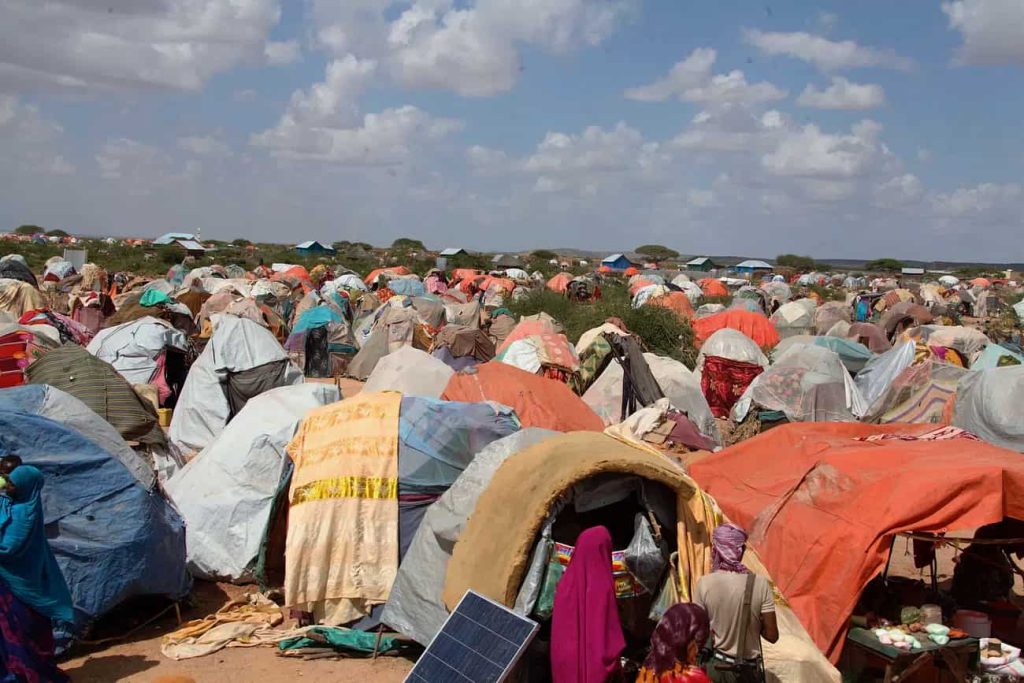
Life in a refugee camp seems stuck in an unending cycle of sameness. Days blur into one another, the only change being the unpredictable and often unforgiving weather conditions.
There is an attempt to document the individual days, but the repetition of the mundane is all too clear. Every harsh, cold morning feels identical, showing no mercy to the inhabitants. The only source of warmth is the resilience of the human spirit, akin to the skeletal structure of a body that refuses to succumb.
One particular Thursday morning was marked with reminiscences of a love lost. My thoughts wandered to my late fiancé, whose life was cruelly stolen by a stray bullet in Syria. He left a void filled with unspoken words and unspeakable grief. Attempts to shed tears proved futile; my tears seemed to have dried up, just as the sky had mercilessly drenched our fragile camp with its fury.
However, among all these tribulations, my health remains the most pressing concern. Specifically, an ailing eye that refuses to be ignored. It’s in moments like these that the stark reality of poverty becomes most evident. When simple medical attention becomes an unattainable luxury, the thought of money takes on a bittersweet connotation.
Each day mirrors the previous one, a constant reminder of my status as a captive to my own misery and pain. The label “refugee” seems synonymous with suffering, a cursed word that haunts me as long as I remain within this unforgiving landscape.
In the face of such overwhelming odds, what is most needed is your support. Whether it’s through raising awareness, volunteering, or contributing to refugee aid organisations, every little action can help to bring about change. Let us fight against the injustices faced by refugees like Jihan and many others. Stand up for humanity today, because tomorrow might be too late.
- This diary entry was submitted on November 2021.
Caravaggio’s Crucifixion of St. Peter: The Unseen Heroism
By Carla Pietrobattista
Caravaggio’s 1601 Crucifixion of St. Peter showcases mastery of light, human detail and transformative narrative in this iconic Baroque masterpiece.
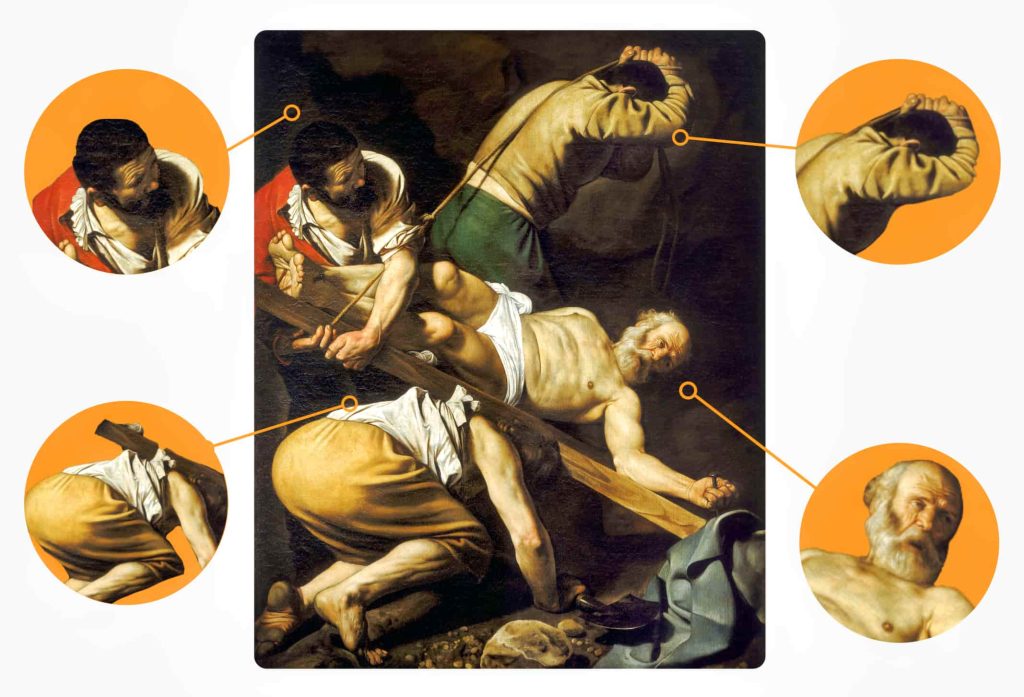
English Poetry After WWII: The Rise and Evolution of Post-War Literature in The UK
By Alex Liberto
In a world recovering from the devastation of war, how did English literature find its footing? Here are the most pivotal figures and movements that reshaped the post-war literary landscape.
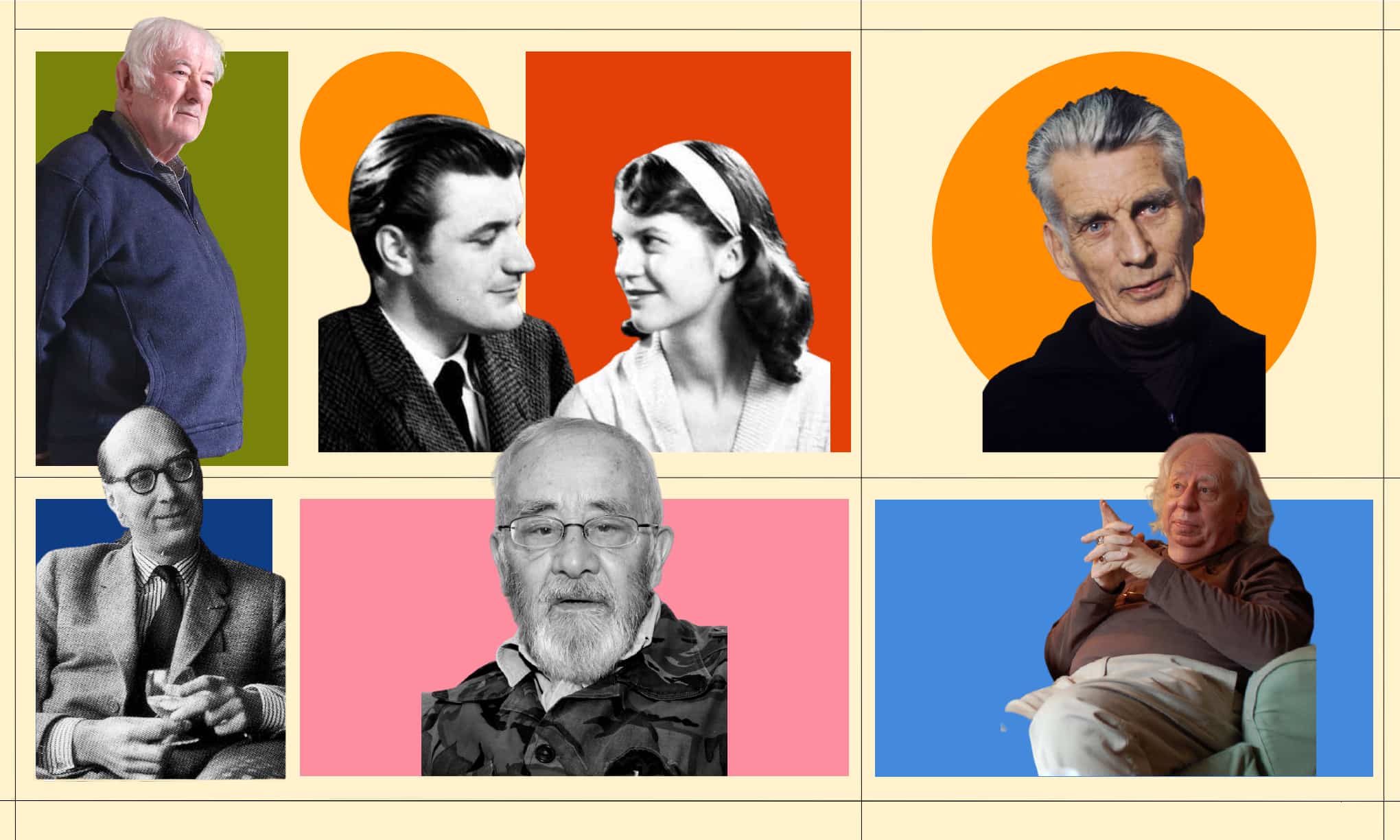
Michael Torke’s ‘Being’: Dreadful Art Cover, Glorious Music
By Ariana Yekrangi
Michael Torke’s ‘Being’ is a transfixing 43-minute composition that shimmers with infectious energy, despite its lacklustre album cover.
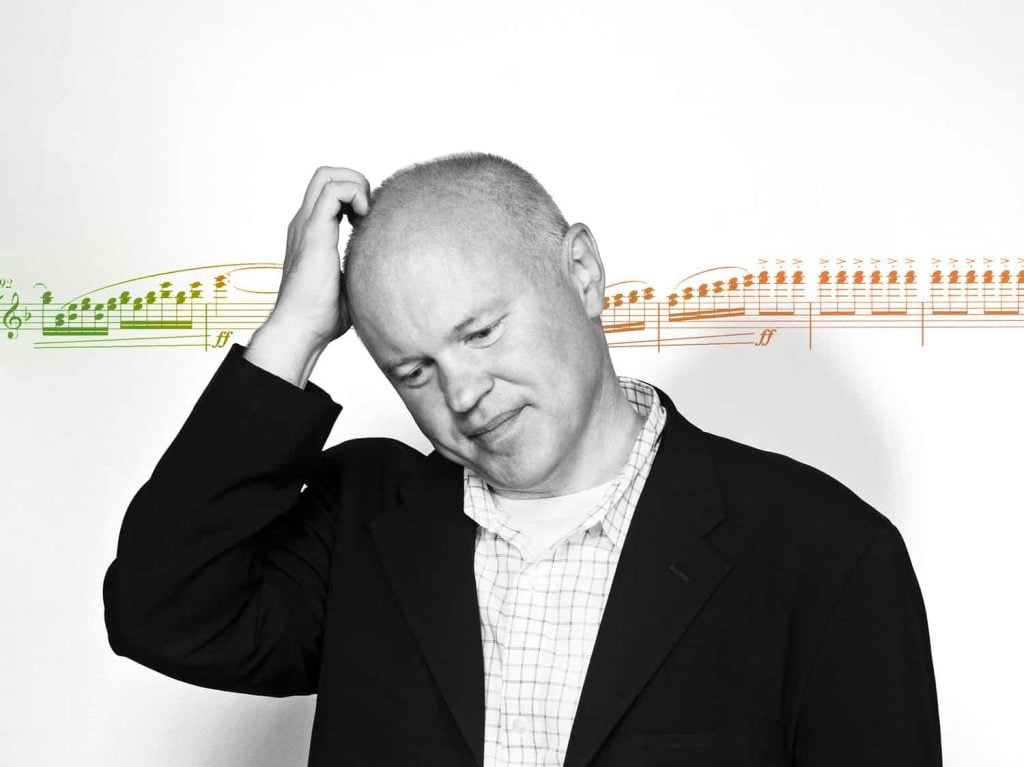
Unlocking the Vault: A Money-Themed Trivia Challenge
By Adrian Liberto
Test your financial knowledge from the origins of currency to the richest people on the planet in our quiz designed to expand your economic acumen. Do you know your Juno from your Musk? Let’s find out.

Thank you for reading this issue! See you at the next one. 🤗

